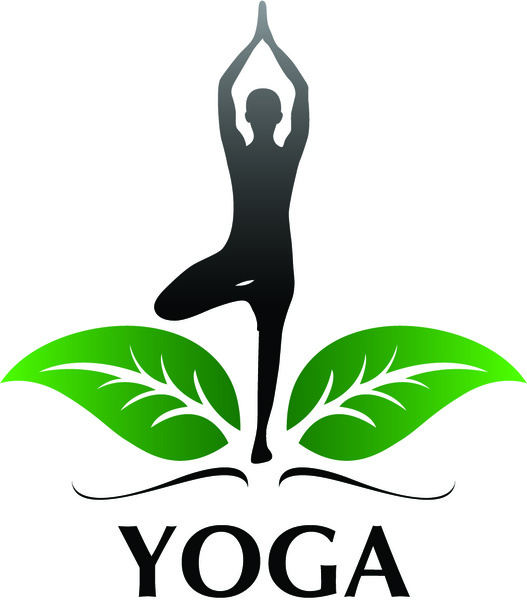Introduction
Our current modern life lures us with conveniences and comforts. The price of these comforts we pay in the form of hypertension, obesity, heart problems, and it not just affects us physically, but creates mental health issues as well. Amidst these atrocities of modern life, the science of yoga impacts like sunshine that glows our path with harmony, well-being, and calmness.
Yoga lends a well-balanced enhancement of the physical, mental, and spiritual aspects of a person. It is an old discipline since ancient times in our country. Yoga is an amalgamation of exercise, breathing techniques, and meditation. It not just improves your health but also lends peace to the soul.
Yoga is also looked up to as a complete stress buster and is getting popular with each passing day. Though, Yoga for beginners usually starts with learning some simple basic poses like the Hatha Yoga, or may initially begin with a chant and meditation. Numerous yoga poses are known as asanas. Each pose or asana has a tale behind it. Some of these poses are derived from the Earth, some from ancient stories and animals. Understanding the meaning behind each pose will help the person to connect with the spiritual side of yoga. Many people opt to practice Kundalini Yoga. It has several health benefits such as it reduces stress levels, speeds up metabolism, and provides a better mood. It is a combination of movement, breath, and sound.
Based on the current awareness wherein a huge emphasis is given on the healthy and nutritional diet clubbed with the wisdom of ancient scriptures and the discipline of yoga provides its practitioners a path to lead a healthy lifestyle. Yoga not only restores the vitals of our body to their initial glory, but it also helps to strengthen our emotional resilience. You can also reach out and consult a doctor online in India to know the exact correlation of your health issues and how to resolve it with the help of yoga. Do continue reading further to know more about the importance of yoga in our life.
Definition of Yoga
We would have heard the word yoga infinite time since ancient ages, but what is yoga? Is it a form of exercise? Or is it a philosophy, a religion, or an ideology? Or is it something else? What is the meaning of yoga? To understand this you can opt for an online medical consultation, to have a brief idea of yoga as there is not just one definition of yoga.
The word yoga has several meanings as a combination, conjunction, unity, etc. Yoga, the word originated from Yuj- a Sanskrit word that means to join or to yoke, or to unite. It is a classic amalgamation of physical exercises, mental meditation, and breathing techniques. It is carried out in sync to relieve stress and strengthens our muscles. It resembles the union of individual and universal consciousness. Yoga is a spiritual discipline that creates harmony between the mind and the body. It is a science and art of healthy living.
Types of Yoga
There are several different types of yoga but it is a little perplexing to figure out the right one for you. Most yoga styles are derived from the same basic asanas, but the experience of each form is radically different from one another. Read on ahead, to know about the popular types of yoga, along with their vital characteristics to know where to begin and to check which one is the best fit for you.
Bhakti Yoga
Bhakti, the word is developed from Bhaj – a Sanskrit word that means to worship God. Bhakti Yoga denotes the union with the Eternal or Almighty. It imparts a feeling of oneness. Not just Hinduism, but most religions emphasize this spiritual path. Bhakti Yoga in Bhagavad Gita is mentioned in the 12th chapter, wherein Lord Krishna emphasizes the path of devotion, which is above all other spiritual disciplines and devotion. With the help of Bhakti Yoga, one who performs pure devotional and conscious service to Him gets to liberate themselves from the cycle of life and death, the path of liberation, or Moksha. There are five types of Bhakti Yoga, and they are as below:
- Lower or Apara and Higher or Para Bhakti
- Selfless devotion or Nishkamya Bhakti and Devotion with desires or Sakamya bhakti
- Avyabhicharini and Vyabhicharini Bhakti
- Bhakti done with rituals or Vidhi Bhakti and Bhakti done with rituals or Ragatmika Bhakti
- Mukhya Bhakti and Gauna Bhakti
- Tamsic, Rajasic, and Sattvic Bhakti
There are several benefits of Bhakti Yoga as below:
- It gives you immense peace
- It reduces sorrow and pain
- Removes all fears and doubts
- It gives you mental and emotional stability
- Eliminates Ego
- It gives you an understanding of the divine
Karma Yoga
Karma means action – karma Yoga means putting 100% effort into your work without expecting the result or the outcome. Karma Yoga is applied to all the things we do on a daily basis, be it a simple small task or a big challenging task. When you perform your action or karma with complete focus and attention, quite selflessly, it will provide you with a sense of fulfillment. Doing your karma or work without being attached to the outcome, will ultimately fulfill the goal of yoga – will lead to union with self. There are three types of karma Yoga, Sanchita karma, the act or karma that is suksma or latent that will turn into action, Prarabdha Karma or the act itself, and Agami Karma or the consequences of present action in future. The benefits of Karma Yoga are several as below:
- It helps to diminish the ego
- Know and understand your duties
- Your priorities become clear and you can complete them without any personal desire or any attachment.
- Teaches selflessness, responsibility, and commitment
- It gives you clarity of thoughts
Hatha Yoga
In the Sanskrit language, the word Hatha means stubborn. So Hatha Yoga means doing yoga without any type of interference of the mind and five senses. It involves the practice of pranayama, asana, dhyana, and Dharana to attain eternal peace. Hatha Yoga is gentle yoga, but it is mentally and physically challenging. Hatha Yoga is great for beginners. Some of the popular Hatha Yoga asanas are Tadasana, Vrikshasana, Uttanasana, Halasana, Sirsasana, and more. Hatha Yoga is practiced a lot by most people. There are several benefits of Hatha Yoga such as
- It helps to relieve anxiety
- Benefits for osteoporosis, arthritis, and fibromyalgia
- Relieves back and neck pain
- Helps to manage stress
- Relieves symptoms of menopause
Kriya Yoga
Kriya Yoga is a primeval meditation technique that is used to hasten spiritual growth. Kriya is a technique to control energy or pranayama. It includes meditation practices. It leads to the union with the Almighty or infinite using a certain action. There are around 6 Kriya types as below
- Kapalabhati – Stimulates the brain cells
- Neti – Upper Nasal Tract
- Trataka – Exercises for the eye
- Nauli – Viscera and Abdominal muscle
- Dhouti – intestine cleansing
- Vasti – rectum cleansing
One of the most renowned Kriya – is the Sudarshan Kriya. If we break down the word – Sudarshan – wherein SU – denotes proper and darshan denotes vision. Kriya denotes purification of the body. In totality, Sudarshan Kriya represents proper vision by pure action. Sudarshan Kriya Yoga is a breathing technique that uses cyclical breathing configuration ranging from calming slowly to stimulating and rapid cycle. By taking control of one’s breath affects nerves, immune systems, and psychological issues. The benefits of Kriya Yoga are as below:
- Helps in spiritual growth
- Mind control
- Aids in Intellectual and personality development
Swara Yoga
Swara Yoga relates to ancient science related to nasal breathing. Swara in Sanskrit denotes – musical notes, it signifies the flow of breath through the nasal passage. The main purpose of Swara Yoga is that it displays that the flow of the breath controls each nostril regularly and alternately. This flow of breath changes periodically thus it balances the complete system. It creates a relationship between the different activities of the body with the control of breath. There are three different types of Swara Yoga are as below:
- Left Swara or Ida Nadi
- Right Swara or Pingala Nadi
- Third Swara or Sushumna Nadi
Generally, a person can earn wealth based on his or her skills, strategy, and knowledge. But Swara Yoga for wealth attainment is much deeper than the regular norms. It leads one to enter the cosmic world and attain wealth through Swara Yoga with much ease.
Raja Yoga
In Sanskrit, Raja means King – which refers to the status of Raja Yoga as the royal path. It conventionally refers to the goal of yoga and the process to attain it. It leads to the state of contentment and peace which arises from meditation and Yoga. Raja Yoga is the yoga that controls the body and mind. It involves the mental, physical, and spiritual dimensions of human existence. Raja Yoga is the yoga of controlling our mind that helps us to achieve the power of focus and concentration. Once you control your mind, the path to attain Samadhi and enlightenment becomes easy.
Raja Yoga meditation is a type of meditation that is obtainable to one and all. In this type of meditation, there is no need for rituals and mantras, and they can be carried at any place and time. Raja Yoga meditation is quite versatile, easy, and simple to practice and it can be carried out with open eyes. Numerous benefits of Raja Yoga are it improves interpersonal relationships, provides freedom from stress and anxiety, creates a sense of well-being, removes any negative thoughts, enhances concentration and memory, and improves sleep quality.
Yoga and Chakras
As you start practicing yoga, you may have heard about the correlation between Yoga and chakras, and Chakra Yoga. As per our ancient traditional concepts, the human body consists of muscles, bones, skin, and organs, but the body also consists of several layers of energy fields, these layers are known as the subtle body. In our body, the energy travels through this subtle body through a series known as Nadis. These Nadis overlap at points of stronger energy known as Chakras. In Sanskrit, chakras mean spinning wheel. As per yoga, the human body has seven chakras, which are a convergence of feelings or thoughts, energy, and the physical self.
There are seven chakras in our body such as,
- Muladhara or Root Chakra is situated at the beginning of the anus and base of the spine.
- Svadishthana or Pelvic Chakra is situated above the root chakra
- Manipura or Navel or Nabhi Chakra is situated above the navel.
- Anahata or Heart Chakra is situated at the center of the chest
- Vishuddhi or Throat Chakra
- Ajna or Third-Eye Chakra is situated between the eyebrows
- Sahasrara or Crown Center is situated on the top of the head.
Our body is in balance when the energy flows freely through the channels, and you feel at ease in your actions, thoughts, and relationships. But when any of the above chakras are blocked, one may feel emotional, physical, and psychologically low. Negative thoughts prevail and tension builds up in the body. When one faces such situations, trying the seven chakras Yoga will be quite beneficial.
Importance of Yoga in Daily Life
In today’s fast-paced life, it is crucial to understand the importance of Yoga and how to implement it. The Covid-19 phase has to lead us all to take a break and re-think our health. These trying times has made us all aware of the importance of yoga in our life. It has myriad benefits on people of all age groups and gender such as it helps in weight loss, improves immunity, relieves anxiety and stress, increases muscle strength and flexibility, and maintains a fit and healthy lifestyle. There are special yoga asanas to cure several health issues. Yoga for women especially focuses on all women-centric health issues, for example – Yoga for hormonal imbalance also works wonders. While suffering from any kind of mental stress, while consulting a psychologist online, even he or she would recommend you to try yoga as the best option.
Yoga Poses for Beginner
During the initial days, when you begin to do yoga, you may feel overwhelmed by the number and names of Yoga poses. You don’t have to stress, as it is recommended to gradually and slowly begin with easy Yoga poses. Your body will get attuned to it as you practice yoga. One of the crucial things is to start and then maintain the consistency to practice each day. You should do basic Yoga poses to attune your body. Some of the simple yoga poses for beginners are as below:
- Balasana or Child Pose
- Adho Mukha Svanasana or Downward-Facing Dog pose
- Kumbhakasana or the Plank Pose
- Chaturanga Dandasana or the Four-Limbed Staff Pose
- Bhujangasana or the Cobra Pose
- Trikonasana or Triangle Pose
- Setu Bandhāsana or Bridge Pose
Child’s Pose
Balasana in simple language means a child’s pose. Child pose Yoga is done by being down on your fours. Bring your feet and knees together as you sit and then place your butt on your heels and stretch your arms ahead. Lower down your forehead on the floor, and let your body release. Stay for around 30 seconds. Generally, Balasana is a kind of resting pose that is carried out before or after each asana. The benefits of child pose yoga are it helps to relieve stress, reduces back pain, creates a good stretch in the thighs, hips, and ankles, and calms down the brain.
Downward-Facing Dog
A Downward-facing dog is also known as Adho Mukha Svanasana. This downward dog pose can be done by getting on your fours, whereby your knees should be below your hips and wrists below your shoulders. Stick your toes, raise your hips, and draw them towards your heels at the back. Keep your hips back and legs straight. You can walk a little ahead with your hands to get the required comfortable length. Press your palms and rotate the elbows towards each other. Hold the asana for a few seconds and then relax to rest. The benefits of downward-facing dog Yoga are it tones the legs and arms, lengthens the hamstrings, strengthens the shoulders, and stretches the calves.
Plank Pose
Kumbhakasana in simple words means Plank Pose. The word Kumbhak in Sanskrit means retention of your breath and asana means Yoga pose. Plank Pose Yoga is one of the foundational poses. The forearm plank pose is an arm balancing pose that helps to strengthen the spine and the arms and tone the muscles of the abdomen. It teaches us to support and balance the entire body with our hands. This pose can be done by going down on your fours, tucking your toes and lifting your legs off the floor. Engage the muscles of the abdomen, draw your navel towards the spine, keep your back in a straight line without bending or sagging, and do not droop your shoulders. Hold this pose for a few seconds and then release this pose. The benefits of the Plank pose are several such as building stability and core strength, which helps to improve coordination and balance. It also protects your lower back from any kind of injury.
Four-Limbed Staff Pose
The traditional name of the four-limbed staff pose is Chaturanga Dandasana. It is one of the major basic Yoga poses. The name of this pose is derived from 4 different Sanskrit words such as Chatur – denotes four, Anga denotes limb, Danda denotes staff or spine, and Asana denotes pose. When this pose is done accurately the body looks like a straight line or a rod. To do this pose, you need to start with a plank pose, elbows over your wrists, keep your body just a few inches above the floor, do not let your chest sag on the floor, engage your leg and abdominal muscles. Maintain your hips in sync with your legs and torso; maintain this pose for a few seconds and then release. The benefits of the four-limbed staff pose are that it tones your arms, wrists, lower back, and abdominal muscles. It also helps to improve your posture.
Cobra Pose
Cobra Pose is also known as Bhujangasana in the Sanskrit language. Cobra stretch is a part of Sun Salutation. Cobra pose Yoga is done using your knees, chin, arms, and chest. You can start by lying on your stomach, palms on the floor, keep your elbows tucked close to your sides, adhere pubic bone to the floor, inhale and lift your chest and pubis towards the navel. Hold the pose for a few seconds, breathe, and release slowly. The benefits of cobra pose Yoga are it strengthens the spine, soothes sciatica pain, relieves fatigue and stress, tones the buttocks, opens the lungs, improves digestion, and tones shoulders, abdomen, and buttocks.
Triangle Pose
Triangle Pose Yoga in Sanskrit is known as Trikonasana. The word is split and derived from tri- which means three; Kona means angle, and asana means pose. It resembles the triangular shape that is created by this pose. It is one of the foundations of yoga poses. The opposite of the triangle pose is the revolved triangle pose. This pose is carried out by balancing your feet firmly on the ground, begin with Tadasana, keep your feet a few feet apart from each other, raise your arms parallel to the ground with palms down, turn your foot to ninety degrees, lower your hand down towards the ankle, turn your head upwards to look at the fingertips, follow the same for the opposite leg and hand. Avoid the temptation to bend your knees; do not rest the hand on your knees. The benefits of the triangle pose are that it stretches the hamstrings, hips, strengthens your legs, and opens your shoulder and chest. It also improves stability and balance. It is therapeutic for sciatica, anxiety, and osteoporosis.
Bridge Pose
Bridge pose Yoga in the Sanskrit language is known as Setu Bandhāsana. The word is derived from Sanskrit words such as Setu which means Bridge, bandha means to lock, Sarva means all, Anga means limb, and asana means pose. While doing this pose, your legs and arms resemble a locked bridge. This asana is performed by lying down flat on your back with your feet on the floor and knees bent. Extend your arms on the floor with palms flat. Lift your hips while exhaling and draw your butt towards your pubic bone. Hold on for few seconds and then release. The benefits of bridge pose are it helps to strengthen the spine, stimulates the nervous system, and improves digestion
Health Benefits of Yoga
Yoga provides better mental and physical health to people of all age groups. A person may be suffering from any kind of surgery, or going through an illness, or has some chronic health condition; yoga can be a great resource as an integral part of the treatment and hastens the healing process. The benefits of yoga are it helps to keep sickness at bay, heal all kinds of aches and pains, and improves overall health. Once you get to the core of yoga, you would realize that yoga benefits go beyond the mat and would be motivated to consistently follow yoga. Some of the benefits of yoga are as below:
- Strength and flexibility
- Helps to relieve back pain
- Provides healthy heart
- Better sleep
- Improves body posture
- Eliminates stress and offers better mental health
- Reduces chronic pain
- Improves quality of life
Strength and Flexibility
The benefit of yoga is that it builds up your body strength. While doing yoga, a lot of strength is required to hold your body in a particular pose. Yoga provides a holistic approach to strengthen your body. Yoga not only strengthens the body but yoga also increases flexibility. Flexibility in yoga is a kind of attitude that empowers and transforms the body as well as the mind. Flexibility offers a range of physical benefits. As you practice yoga, you will develop flexibility and strength that will make your body susceptible to withstand any kind of stress.
Yoga Helps to Relieve Back Pain
In today’s era, as most people have sedentary lifestyles, many of us suffer from back pain. To get relief from it, yoga for back pain is the best option. But before you begin to try yoga for your back pain, it is recommended to first check with your doctor on it. Once the doctor approves, share your pain points and limitations with your yoga instructor to guide you accordingly. The benefit of yoga for back pain not just relieves you from the pain but also helps to nullify the stress associated with back pain. Yoga poses help to strengthen and stretch the muscles that support the spine and the back, such as the paraspinal muscles that work to bend your spine.
Healthy Heart with Yoga
The heart and yoga connection showcases several benefits of yoga for the heart. Yoga not only eliminates stress, thereby benefiting the heart, but it also helps to lower blood cholesterol, blood sugar, and blood pressure levels. There are numerous yoga poses for the heart such as Bridge Pose, extended triangle pose, half spinal twist pose, cow face pose, and seated forward bend pose. However, when anything is concerned with your heart, it would be best, to first and foremost seek an online cardiologist consultation, to get proper guidance and approval from the doctor before you begin your yoga session.
Better Sleep by doing Yoga
Along with physical strength and flexibility, curing health issues, the benefits of yoga also aids to achieve better and peaceful sleep. It works with our autonomic nervous system, and also helps to reduce anxiety. Yogic sleep or Yoga Nidra are being accepted and practiced by many in recent times. Practicing Yoga Nidra for sleep is an ancient technique where the person gets into a deep state of conscious relaxation. It provides a state of deep sleep where the mind, intellect, and senses relax.
Helps you to perfect your Body Posture
Working long hours clubbed with a sedentary lifestyle makes many of us ignore or neglect our health, especially our posture. Incorrect posture and slouching are common issues faced by today’s generation. A good posture helps to diminish many health conditions including damage to the spine and many other lifestyle issues as well. One can achieve better posture from Yoga. The yoga poses work on your habit or addiction to slouch and also increases your core strength. All of this goes a long way to improve your posture. Some yoga poses for strength and posture correction are Child’s pose, Triangle pose, Bridge pose, Warrior pose, and boat pose.
Reduce Stress and Gives you better Mental Health
It is well-renowned that Yoga focuses on the physical and mental well-being of its practitioners. By doing yoga, the secretion of the primary stress hormone – Cortisol is reduced to a large extent. This in turn reduces stress and provides relaxation. It also helps to improve the quality of life and provides stable and good mental health as well. Yoga for stress relief works wonders. Similarly, yoga for anxiety is highly recommended. People who have practiced can cope with feelings of anxiety. It has been observed that women suffering from post-traumatic stress disorder, after practicing yoga, have found a subsequent decrease in anxiety feelings. Consulting a psychologist online too will give a better and clear idea of how to minimize and remove stress and anxiety with the help of yoga.
Yoga Reduce Chronic Pain
There are several benefits of yoga especially for people suffering from chronic pain. Chronic pain gives rise to anxiety, depression, and impaired cognitive function, thus impacting mental health as well. It also affects the breathing pattern, muscle strength, and energy levels of a person. Consistent practice of yoga reduces chronic pain by reducing inflammation, and decreases pain responses in the body and mind. Breathing techniques and meditation relax the body, calms the mind and the nervous system. Some of the yoga poses to reduce chronic pain are the Butterfly pose, Bridge pose, and legs up the wall pose.
Improve Quality of Life
Develop self-confidence, better health, no stress, inner peace, and overall improve the quality of life with yoga. Doing a few yoga poses or asanas each day will make a huge difference in your well-being. So do not miss out on investing some time to practice yoga every day. To summarize the benefits of yoga, it helps one to focus on the present, provides inner peace, calms you, loses excess weight, becomes stronger, improves flexibility, tones arms, and legs, improves digestion, and stimulates the heart, and many more benefits.
Mediflam: consult a doctor online in India
Don’t be daunted by elaborate yoga studios, complicated poses, and yoga terminologies. Remember yoga is for one and all. It has been proved that practicing yoga daily mitigates many ailments. For any health issues, it would be best if you consult a doctor first and let him or her approve and guide you on it. For such situations, Mediflam is the best resource. It is the best platform that connects the patient with the doctor. All you have to do is register yourself on Mediflam, surf through the site, and acquaint yourself, look out for the resource for your health, make an appointment with the preferred doctor, upload all your reports and health-related documents, consult the doctor, and get the guidance to begin yoga to cure your ailment. So without any delay, roll out the yoga mat and discover the myriad health benefits on your mind and body.













